The y-intercept is (0, 4).
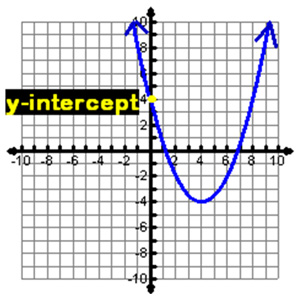
The point where the parabola crosses the y-axis is called the y-intercept.
The y-intercept is (0, 4).

The point(s) where the parabola crosses the x-axis is called the x-intercept.
Other names for the x-intercepts are roots, zeros, and solutions.
The x-intercepts are (-2, 0) and (2, 0).
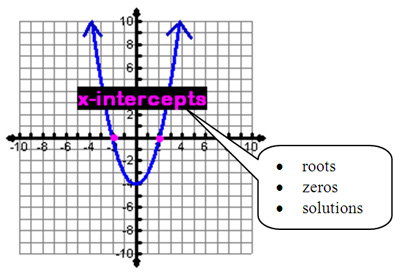
Notice that some parabolas have 2 x-intercepts.
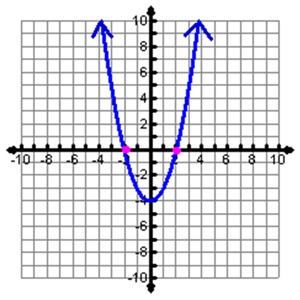
Some parabolas only have 1 x-intercept.
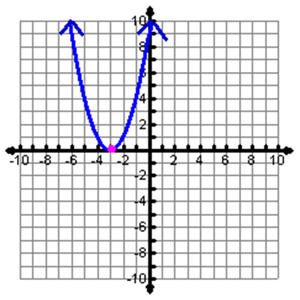
And some parabolas have no x-intercepts.
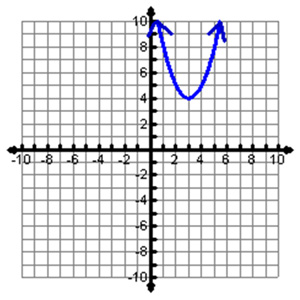
On your graph paper, draw a parabola that has no x-intercepts and a vertex of (-2, 4)?
Name the y-intercept and the zero(s) for the given graph.
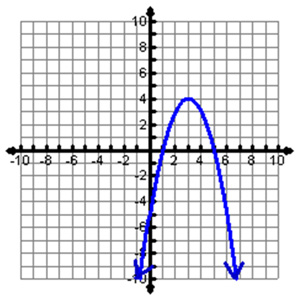
Think about a quadratic function that has a vertex of (2, -5) and a y-intercept of (0, -2). Sketch the graph and then describe its characteristics.
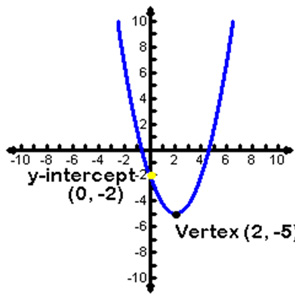

Think about a quadratic function that has x-intercepts of (1, 0) and (-5, 0) and a y-intercept of (0, 3). Sketch the graph and then describe its characteristics.
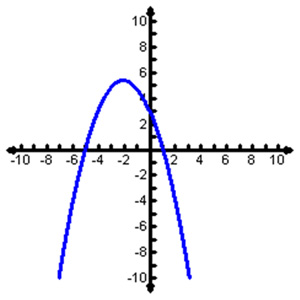
Here are some descriptions you may have included:

Think about a quadratic function that has no roots (x-intercepts) and a vertex of (3, 2). Sketch the graph and then describe its characteristics.
Your graph should be similar to one of the following.
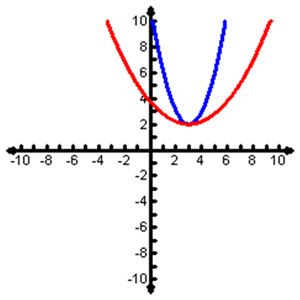
Here are some descriptions you may have included:
